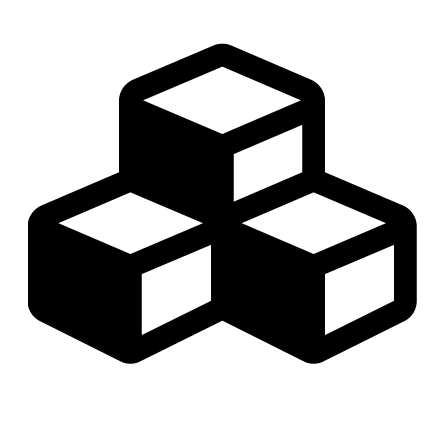Search Constraints
« Previous |
1 - 10 of 1,316
|
Next »
Number of results to display per page
View results as:
Search Results
-
- Creator:
- Nunley, Hayden, Xue, Xufeng, Sun, Yubing, Resto-Irizarry, Agnes M, Yuan, Ye, Yong, Koh Meng Aw, Zheng, Yi, Weng, Shinuo, Shao, Yue, Lubensky, David K, Studer, Lorenz, and Fu, Jianping
- Description:
- Studies of fate patterning during development typically emphasize cell-cell communication via diffusible chemical signals. Recent experiments on stem cell colonies (see Xue et al. Nature Materials 2018), however, suggest that in some cases mechanical stresses, rather than secreted chemicals, enable long-ranged cell-cell interactions that specify positional information and pattern cell fates. The authors of this earlier publication reported a set of in vitro experiments in which uniformly supplied chemical media induced spatially patterned fates in cell colony in a disc geometry. They provided significant evidence that inter-cellular mechanical interactions, as well as mechanical interactions between cells and the substrate, play an important role in this in vitro differentiation process. As part of these experiments, they showed that the concentric width of the outer fate domain is approximately constant as the colony diameter is increased from 300 um to 800 um. In this subsequent publication, we propose a mathematical model for this fate patterning process and explore how the fate pattern depends on substrate stiffness. The experimental images of cell colonies, both for varying cell colony diameter (from Xue et al. Nature Materials 2018) and for varying substrate stiffness (data generated for the publication linked to these data), are provided here. Each example has an image for PAX3 signal (marker for outer fate domain; Paired box gene 3) and an image for DAPI signal (staining nuclei; 4′,6-diamidino-2-phenylindole).
- Keyword:
- Biomechanics, Cell communication, Cell mechanics, Developmental pattern formation, Force sensing, and Vertebrate development
- Citation to related publication:
- Nunley H, Xue X, Fu, J, Lubensky, DK. Generation of fate patterns via intercellular forces. BioRxiv 442205 [Preprint]. April 30, 2021 [cited 2025 Feb 20]. Available from: doi: https://doi.org/10.1101/2021.04.30.442205 and Xue X, Sun Y, Resto-Irizarry A.M. et al. Mechanics-guided embryonic patterning of neuroectoderm tissue from human pluripotent stem cells. Nature Mater 17, 633–641 (2018). https://doi.org/10.1038/s41563-018-0082-9
- Discipline:
- Science and Engineering
-
- Creator:
- Nunley, Hayden and Lubensky, David K
- Description:
- In a previous study (Xue et al. Nature Materials 2018), the authors showed that a key fate patterning event in vertebrate development can be reproduced in an in vitro stem cell culture. They further showed that this in vitro fate pattern seems to depend on mechanical signals rather than secreted chemical signals. In this follow-up study, a mathematical model of this process is proposed. The code in this deposit is for the simulation of this mathematical model in various cell layer geometries and substrate geometries. These geometries include a 1D cell layer, quasi-1D stripe geometry, disc geometry (all on a very thin substrate or a substrate composed of microposts) as well as a 1D cell layer on a finite-thickness substrate. Our model implies that the width of the outer fate domain varies non-monotonically with substrate stiffness, a prediction that we confirm experimentally.
- Keyword:
- Biomechanics, Cell communication, Cell mechanics, Developmental pattern formation, and Force sensing
- Citation to related publication:
- Nunley H, Xue X, Fu, J, Lubensky, DK. Generation of fate patterns via intercellular forces. BioRxiv 442205 [Preprint]. April 30, 2021 [cited 2025 Feb 20]. Available from: doi: https://doi.org/10.1101/2021.04.30.442205, Xue X, Sun Y, Resto-Irizarry A.M. et al. Mechanics-guided embryonic patterning of neuroectoderm tissue from human pluripotent stem cells. Nature Mater 17, 633–641 (2018). https://doi.org/10.1038/s41563-018-0082-9, Banerjee S, Marchetti MC. Substrate rigidity deforms and polarizes active gels. EPL (Europhysics Letters) 96, 28003 (2011). https://doi.org/10.1209/0295-5075/96/28003, Edwards CM, Schwarz US. Force Localization in Contracting Cell Layers, Physical Review Letters 107, 128101 (2011). https://doi.org/10.1103/PhysRevLett.107.128101, and Banerjee S, Marchetti MC. Contractile Stresses in Cohesive Cell Layers on Finite-Thickness Substrates, Physical Review Letters 109, 108101 (2012). https://doi.org/10.1103/PhysRevLett.109.108101
- Discipline:
- Engineering and Science
-
- Creator:
- Heath, Jeffrey
- Description:
- Five short videos, three about food preparation, one about agriculture, and one about catching and cooking a giant pouched rat (Cricetomys)., The videos were incidental byproducts of Heath's linguistic fieldwork on the endangered Pere language spoken in Bonosso village on the outskirts of Tiéningboué city in north central Côte d'Ivoire. The footage was shot by project manager Minkailou Djiguiba as indicated in the credits at the end of each video. , and A much larger number of videos have been made from Mali and Burkina Faso and are deposited in other collections in Deep Blue Data. Many of the videos from all of these countries are also disseminated in a youtube channel that is managed by Djiguiba: https://www.youtube.com/@PratiquesCulturellesMaliBF. For more on Pere language see the Deep Blue Dataset "Pere language lexical datasheets and audio files" ( https://doi.org/10.7302/k6r9-r160) and the grammar cited as “A grammar of Pere (Bere, Mbre) of Côte d'Ivoire“ Under Related items in Deep Blue Documents, below ( https://hdl.handle.net/2027.42/163773) (copy at Zenodo, https://zenodo.org/records/3354193).
- Keyword:
- Côte d'Ivoire, documentary video, and Pere language
- Discipline:
- Humanities
-
- Creator:
- Jalin, Aditya MI, Swatthong, Nawat MI, Rozwadowski, Michelle MI, Kumar, Rajnish MI, Braun, Tom MI, Carlozzi, Noelle MI, Hanauer, David MI, Hassett, Afton MI, Tewari, Muneesh MI, and Choi, Sung MI
- Description:
- Research Overview: This dataset captures the longitudinal experience of both patients undergoing hematopoietic cell transplantation (HCT) and their caregivers through continuous physiological monitoring, daily mood reporting, and periodic health assessments. The data provides unprecedented insight into the dynamic relationship between caregiver well-being and patient outcomes during the critical post-transplant period. and Key Points: Digital biomarker data collected from 166 HCT caregiver-patient dyads over 120 days post-transplant Comprehensive physiological monitoring through wearable devices (Fitbit® Charge 3) Integration of daily mood reports, PROMIS® health measures, and clinical outcomes Unique paired data structure allowing analysis of caregiver-patient dynamics
- Keyword:
- Hematopoietic Stem Cell Transplantation, Caregiver-patient dyads, Physiological monitoring, Wearable Devices, Digital Biomarkers, and Health-related Quality of Life
- Citation to related publication:
- Jalin A, Swatthong N, Rozwadowski M, Kumar R, Barton D, Braun T, Carlozzi N, Hanauer DA, Hassett A, Choi SW. A Digital Biomarker Dataset in Hematopoietic Cell Transplantation: A Longitudinal Study of Caregiver-Patient Dyads (dHCT). medRxiv [Preprint]. 2024 Nov 22:2024.11.21.24317641. doi: 10.1101/2024.11.21.24317641. PMID: 39606379; PMCID: PMC11601742. and Rozwadowski M, Dittakavi M, Mazzoli A, Hassett AL, Braun T, Barton DL, Carlozzi N, Sen S, Tewari M, Hanauer DA, Choi SW. Promoting Health and Well-Being Through Mobile Health Technology (Roadmap 2.0) in Family Caregivers and Patients Undergoing Hematopoietic Stem Cell Transplantation: Protocol for the Development of a Mobile Randomized Controlled Trial. JMIR Res Protoc. 2020 Sep 18;9(9):e19288. doi: 10.2196/19288. PMID: 32945777; PMCID: PMC7532463.
- Discipline:
- Health Sciences
-
- Creator:
- Nunley, Hayden, Xue, Xufeng, Sun, Yubing, Resto-Irizarry, Agnes M, Yuan, Ye, Yong, Koh Meng Aw, Zheng, Yi, Weng, Shinuo, Shao, Yue, Lubensky, David K, Studer, Lorenz, and Fu, Jianping
- Description:
- In an earlier study (Xue et al. Nature Materials 2018), stem cells differentiated into one of two cell types, neural plate border (NPB) or neural plate (NP), in vitro. This previous study demonstrated that this differentiation is likely mechanics-guided. Part of this demonstration was measurements of the displacement of microposts under the cell layer as the cells differentiate. These measurements suggested that the NPB cells are more contractile than NP cells. In a follow-up study (linked to this dataset), we quantitatively analyzed these data to demonstrate even further that the NPB cells are mechanically different than the NP cells and that the post displacement profile is not explained by a model of a cell layer with uniform mechanical properties. This analysis motivated the mathematical model -- for this cell colony system -- that we proposed and analyzed.
- Keyword:
- Biomechanics, Cell communication, Cell mechanics, Developmental pattern formation, Force sensing, and Vertebrate development
- Citation to related publication:
- Hayden Nunley, Xufeng Xue, Jianping Fu, David K. Lubensky bioRxiv 2021.04.30.442205; doi: https://doi.org/10.1101/2021.04.30.442205 and Xue X, Sun Y, Resto-Irizarry A.M. et al. Mechanics-guided embryonic patterning of neuroectoderm tissue from human pluripotent stem cells. Nature Mater 17, 633–641 (2018). https://doi.org/10.1038/s41563-018-0082-9
- Discipline:
- Engineering and Science
-
- Creator:
- Nunley, Hayden, Xue, Xufeng, Fu, Jianping, and Lubensky, David K
- Description:
- In an earlier publication (Xue et al. Nature Materials 2018), the authors reported a set of in vitro experiments in which uniformly supplied chemical media induced spatially patterned fates in cell colony in a disc geometry. They provided significant evidence that inter-cellular mechanical interactions, as well as mechanical interactions between cells and the substrate, play an important role in this in vitro differentiation process. In this subsequent publication, we propose a mathematical model for this fate patterning process and explore how the fate pattern depends on substrate stiffness. One ingredient of this mathematical model is that the cells at the very edge of the colony (lacking adherens junctions on one side) are geometrically different than the rest (by occupying a larger area on the micropattern). These images of DAPI (staining nuclei) and ECad (at adherens junctions) for colonies during early cell differentiation demonstrate this difference. Corresponding code for analysis is included.
- Keyword:
- Biomechanics, Cell mechanics, and Developmental pattern formation
- Citation to related publication:
- Nunley H, Xue X, Fu, J, Lubensky, DK. Generation of fate patterns via intercellular forces. BioRxiv 442205 [Preprint]. April 30, 2021 [cited 2025 Feb 20]. Available from: doi: https://doi.org/10.1101/2021.04.30.442205 and Xue X, Sun Y, Resto-Irizarry A.M. et al. Mechanics-guided embryonic patterning of neuroectoderm tissue from human pluripotent stem cells. Nature Mater 17, 633–641 (2018). https://doi.org/10.1038/s41563-018-0082-9
- Discipline:
- Engineering and Science
-
- Creator:
- Nunley, Hayden, Xue, Xufeng, Sun, Yubing, Resto-Irizarry, Agnes M, Yuan, Ye, Yong, Koh Meng Aw, Zheng, Yi, Weng, Shinuo, Shao, Yue, Studer, Lorenz, Fu, Jianping, and Lubensky, David K
- Description:
- In an earlier study (Xue et al. Nature Materials 2018), stem cells differentiated into one of two cell types, neural plate border (NPB) or neural plate (NP), in vitro with the NP forming a central circular domain. This previous study demonstrated that this differentiation is likely mechanics-guided. Part of this demonstration was measurements of the displacement of microposts under the cell layer as the cells differentiate. These measurements suggested that the NPB cells are more contractile than NP cells (see Dataset of cell layers on micro-patterned substrates compost of posts). The authors of the 2018 study and of a follow-up study further explored how the size of the NPB domain depends on experimental conditions (see Dataset of stem cell colonies differentiating in neural induction medium and code for analysis of resulting fate pattern). To further understand what factors could be driving NPB formation, we estimated cell area at the colony edge (see Dataset on cell areas and nuclear densities in differentiating stem cell colonies). This analysis inspired a mathematical model of mechanical patterning: fate affects cell contractility, and pressure in the cell layer biases fate. Cells at the colony edge, more contractile than cells at the center, seed a pattern that propagates via force transmission. We simulated the model in various cell geometries and for different substrates (see Code for simulating NP/NPB fate patterning in stem cell colonies). Strikingly, our model implies that the width of the outer fate domain varies non-monotonically with substrate stiffness, a prediction that we confirm experimentally. Our findings thus support the idea that mechanical stress can mediate patterning in the complete absence of chemical morphogens, even in non-motile cell layers, thus expanding the repertoire of possible roles for mechanical signals in development and morphogenesis.
- Keyword:
- Biomechanics, Cell communication, Cell mechanics, Developmental pattern formation, Force Sensing, and Vertebrate development
- Discipline:
- Science
4Works -
- Creator:
- Heath, Jeffrey
- Description:
- Seven short audio files and one pdf document with transcriptions for all of them: and 1) noun stems; 2) noun stems in different clausal positions; 3) verb stems including perfective/imperfective morphology; 4) H-toned first plural and second plural pronouns in various positions; 5) third singular and third plural pronouns, in contrast to logophoric-reflexive singular and plural pronouns; 6) tonal effect of first singular pronominal on the following stem; 7) tones of postpositions.
- Keyword:
- Tigemaxo
- Discipline:
- Humanities
-
- Creator:
- Frydendall, Elyse K and Scott, Emily E
- Description:
- This table contains the names, molecular mass (g/mol), and SMILES structure for all compounds tested for CYP2W1 inhibition in the high throughput screen described in this chapter in the tab titled “Compound Library”. Compounds that were identified as CYP2W1 inhibitors are listed in the tab titled “CYP2W1 inhibitors.” This tab contains compound names, molecular mass (g/mol), average standard deviation, number of experiments in which a compound was classified as a hit, number of experimental replicates, hit rate, and SMILES structure.
- Keyword:
- cytochrome P450 enzyme and high throughput inhibition assay
- Discipline:
- Health Sciences
-
- Creator:
- Frydendall, Elyse K and Scott, Emily E
- Description:
- The table herein consists of library compound names, vendors, catalog numbers, CAS numbers, molecular weights, PUBCHEM ID, cLogP, rotatable bonds, total polar surface area, IUPAC name, SMILES strings, notes on stability and absorbance limits, as well as Kd and ∆Amax values for CYP2A6, CYP2D6, and CYP8B1.
- Keyword:
- cytochrome P450 enzyme, high throughput screen, and cytochrome P450 ligands
- Citation to related publication:
- Frydendall, E.K. and E. E. Scott (2024). "Development of a high throughput cytochrome P450-ligand binding assay." J Biol Chem: 107799.
- Discipline:
- Health Sciences


